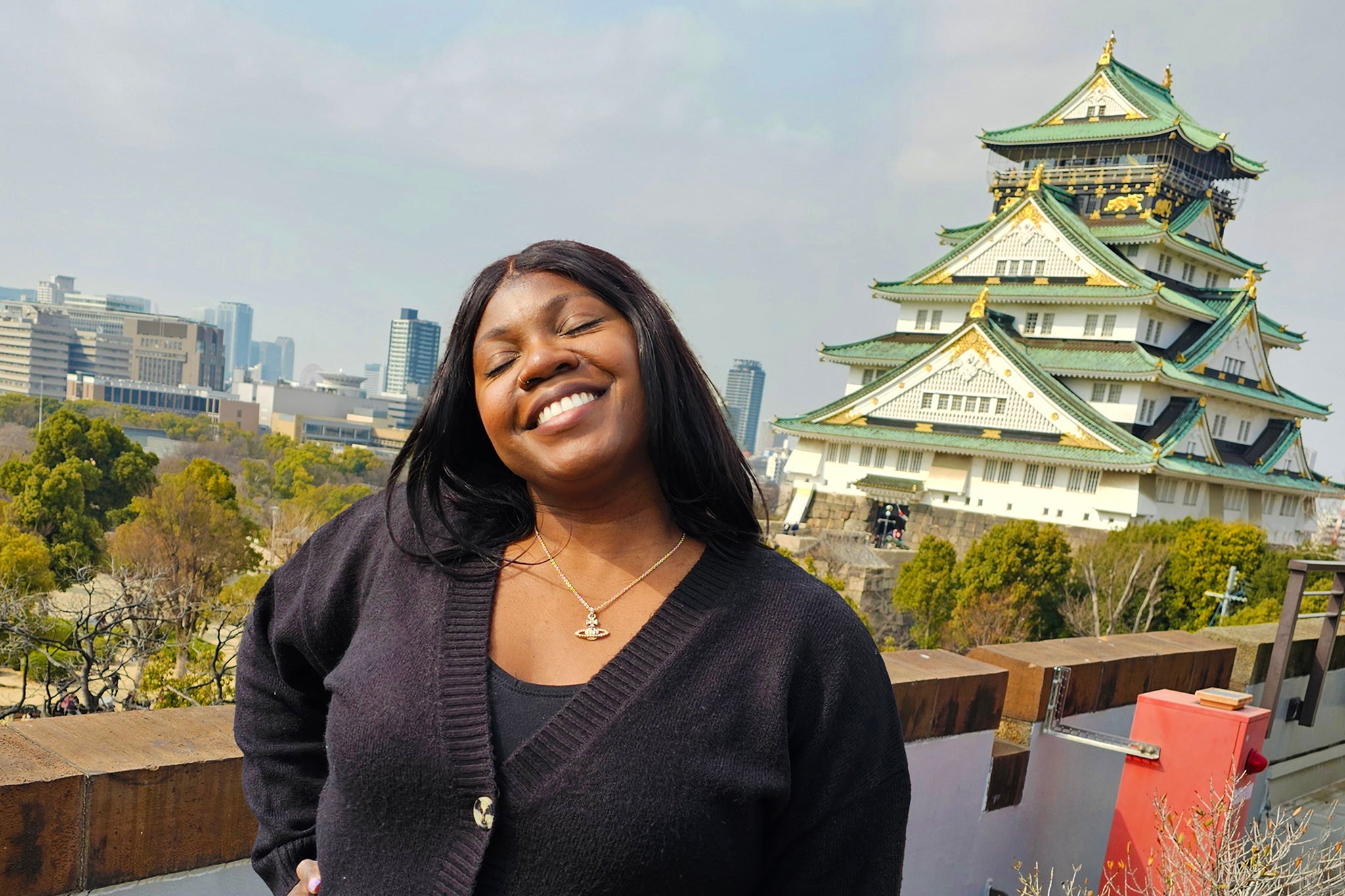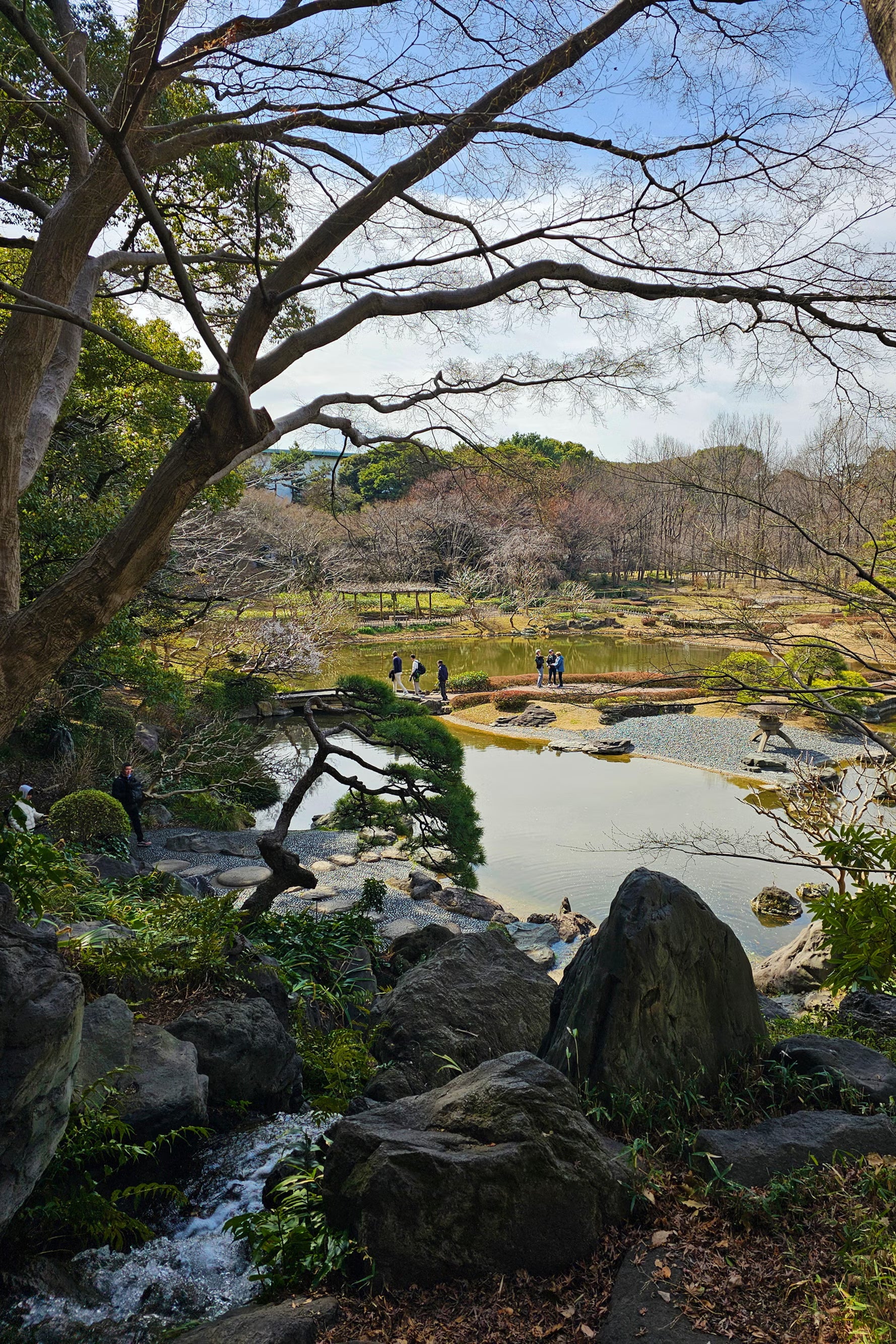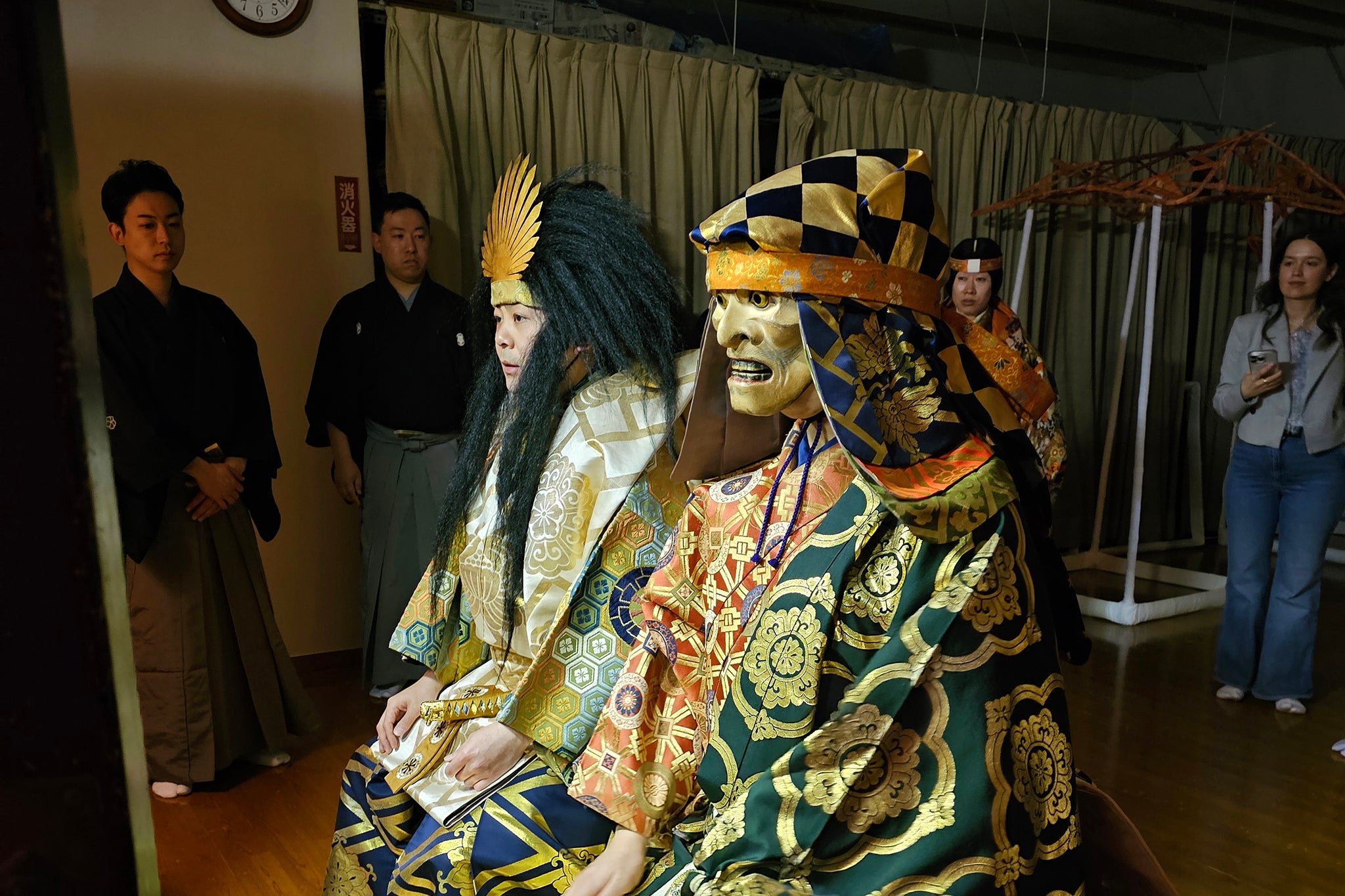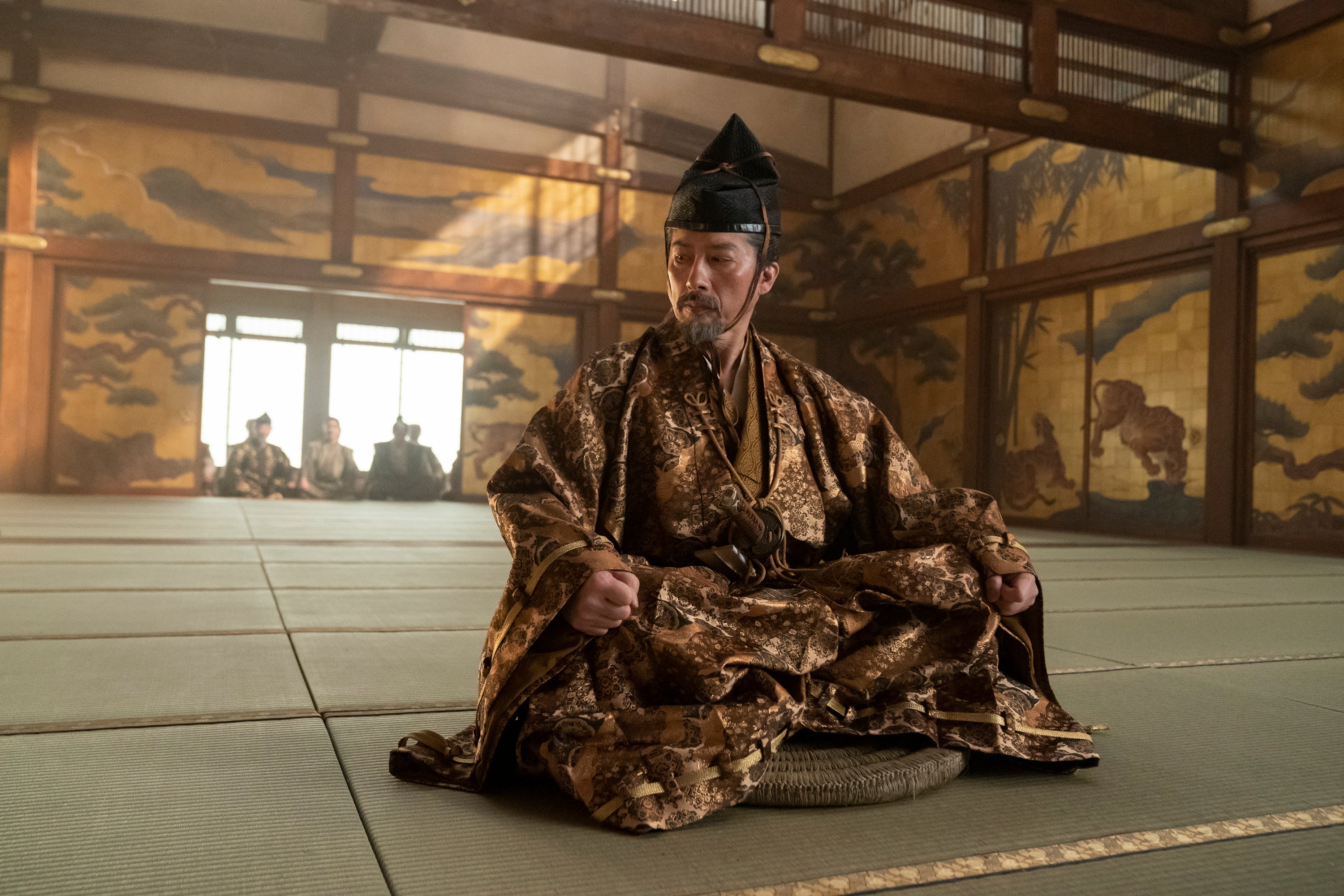Shōgun: Cherry blossom, onsens and my quest to find the Japanese locations behind the hit show
The historical Disney+ drama set in ancient Japan has rapidly become the biggest TV hit of 2024. To unearth its historic origins, Nicole Vassell travelled to the real-life locations that inspired it – from castles in Tokyo to fishing towns in Itō


Rule number one of bathing in a Japanese onsen: no clothes allowed. Not even if you’re shy, and not even if you think you’ve eaten too much sushi to feel body confident – no excuse will get you out of stripping completely bare for the full thermal bath experience. I’ll be honest: getting nude with strangers in a public place has never been high on my list of life goals. But with the promise of the natural spring water healing your every ache and pain, it seems too good an opportunity to miss. And this is how I find myself in an outdoor pool, completely naked with the Pacific Ocean to my left and a silent elderly woman to my right, nothing but the full moon rippling in the water between us.
I should add that this is all Shōgun’s fault. Since its launch in February, the historical drama series – coming to a close on Disney+ in the UK this week – has captured the imaginations of millions across the globe. It combines tales of violent power struggles akin to Game of Thrones with a faithful, deeply researched dive into Japanese history.
Based on James Clavell’s 1975 novel of the same name, the show is set during one of the most significant periods in Japanese history – the 16th and 17th centuries, which marked the end of the politically fraught Sengoku era and the establishment of the Edo period. The latter was a time of peace, artistic appreciation and economic stability.
The show is brilliant – addictive, compelling, strikingly beautiful. I had to see its dazzling locations up close. To my surprise, this would mean travelling to Vancouver, Canada, where ancient Japan was faithfully recreated on sound stages and a handful of Canadian exterior sets. I trust that Canada is lovely at this time of year, but it wasn’t exactly what I had in mind. Instead, to get even closer to Shōgun and the real events that inspired the story, I went to Japan to learn all about the locations that fed into the series – onsens and all.
I start my trip in Tokyo, a city that comfortably combines the future with the ancient past. Bright lights and mind-bending technology surround me, as well as delicate shrines and temples. In the gardens of the Edo Castle ruins, the first blossoms of the year begin to bloom. Known as sakura, the soft pink flower brings the estate to life, adding wonder and grace to the grounds. They’d feel far more foreboding without it, with their stony moats and lookout points. In the 16th century, the warlord Tokugawa Ieyasu was the owner of the castle, and it stayed within his ruling clan for the next 260 years. The majority of the main building burnt to the ground in 1863, but it is easy to imagine how majestic it once was.
To put it in a Shōgun context, I’m standing in the home of its central character, Lord Yoshii Toranaga (Hiroyuki Sanada). Like Tokugawa, Toranaga battles against a council of his fellow leaders to bring Japan into a new age. The vast castle grounds were once known as “a city within a city”, and it’s exciting to think about how much of the country today is a product of the decisions made right where I stand.

A few kilometres north on the bustling subway, I take in a Noh live theatre performance. A type of Japanese musical drama established in the 16th century, Noh was popular with leaders and warlords such as Tokugawa. Though many Noh pieces told stories of battles from centuries earlier, the leader – or Taiko – who ruled Japan just before the events of Shōgun preferred stories inspired by his own life and achievements. The series followed suit.
“The Noh scriptwriters at the time wrote plays especially for the Taiko on his orders – and we modelled a routine on one of the real pieces about him,” Shōgun’s historical consultant Frederik Cryns tells me. Watching the actors perform the full 10-minute piece seen briefly in episode six of the show is breathtaking – I see the slow intricacies of the movements up close, while the throaty, warbling chant of the live singers provides a fittingly haunting accompaniment.
From Tokyo, I take a bullet train to the small fishing town of Itō, zooming by a snow-capped Mount Fuji on the way. This leg of my trip is all about the sea pilot William Adams, the inspiration behind Shōgun’s fish-out-of-water Englishman, John Blackthorne (Cosmo Jarvis). In the 1600s, Adams spent several years stationed here building ships at Tokugawa’s request after he washed up in Miura, another town just across the bay. As we see in the dynamic between Toranaga and Blackthorne in Shōgun, Tokugawa and Adams had a close working partnership. It led to the Japanese ruler making Adams the first English samurai: an incredible honour.

Watch Apple TV+ free for 7 day
New subscribers only. £9.99/mo. after free trial. Plan auto-renews until cancelled.
ADVERTISEMENT. If you sign up to this service we will earn commission. This revenue helps to fund journalism across The Independent.

Watch Apple TV+ free for 7 day
New subscribers only. £9.99/mo. after free trial. Plan auto-renews until cancelled.
ADVERTISEMENT. If you sign up to this service we will earn commission. This revenue helps to fund journalism across The Independent.

Spending just a day in this sleepy, cosy village, it is clear to see how large Adams’s legacy looms. A steel monument of a ship and its pilot stands above the seashore – it’s Adams, otherwise known as Miura Anjin, “the pilot of Miura”. The ryokan I stay in is named after him: Kai Anjin.
Overlooking the Pacific Ocean, the traditional inn is even built like the inside of a ship, with dark wooden slates lining the walls from floor to ceiling. And like Adams and Blackthorne, I indulge in a midnight thermal bath, smarting at first at the unfamiliar company and the nearly-too-hot heat, but eventually loosening my shoulders and letting the water do its work.
Next, I venture west and reach Nijo Castle, the Kyoto residence of the Tokugawa clan. Outside, it’s one of the most astonishing views I’ve ever seen, starting from its ornate black gates trimmed with yellow gold, to its finely manicured yards, its tree leaves cut in satisfying rounds. Inside, I see paintings on the reception room walls – harsh ones, with fierce tigers baring their teeth mid-roar. But the closer I move into the inner sanctum of the shōguns, the art softens. Tigers become pine trees. This was intentional, Cryns explains. While visions of strength and power adorn the rooms seen by the more distant castle guests, more trusted visitors are treated to less intimidating scenes.
Shōgun recreates some of the specific features of Japan’s royal palaces in detail. The entire creative team wanted to ensure that the show would be a satisfying watch for Japanese viewers – many of whom feel their culture has long been misrepresented in western productions.

For Cryns, that meant making sure the smallest details were accurate. One of his proudest contributions related to the wills, letters and poems that feature throughout the series. Letters were an essential way for feudal orders to be delivered across the land, while soldiers wrote wills for their loved ones before each battle, in case they didn’t return. Though each letter only appears on screen for moments, all the texts were written out in full, with words by Cryns.
“My wife is a linguist, and together we researched hundreds of texts and poems from that era, written by warlords and the people of the samurai class at the time,” Cryns tells me. “After that, we reconstructed new poems in medieval Japanese, 100 per cent following the rules of the time.” With streaming giving viewers the opportunity to inspect every detail with rewind and zoom functions, Cryns wanted to make sure that the show was authentic from every angle. “If you pause it, you’ll see that it’s real,” he adds.

Knowing how much work has gone into bringing Shōgun to life makes the show even more fulfilling when watching from home in London. The intricate halls of a ruler’s palace. The handwritten words. The dainty pouring of matcha tea. Each episode casts me back to my unforgettable time travelling around Japan. But whether or not you’ve had the chance to explore the country for yourself, you can rest assured that what you’re seeing on screen is as close to the real thing as it can get.
‘Shōgun’ is streaming on Disney+
Join our commenting forum
Join thought-provoking conversations, follow other Independent readers and see their replies
Comments